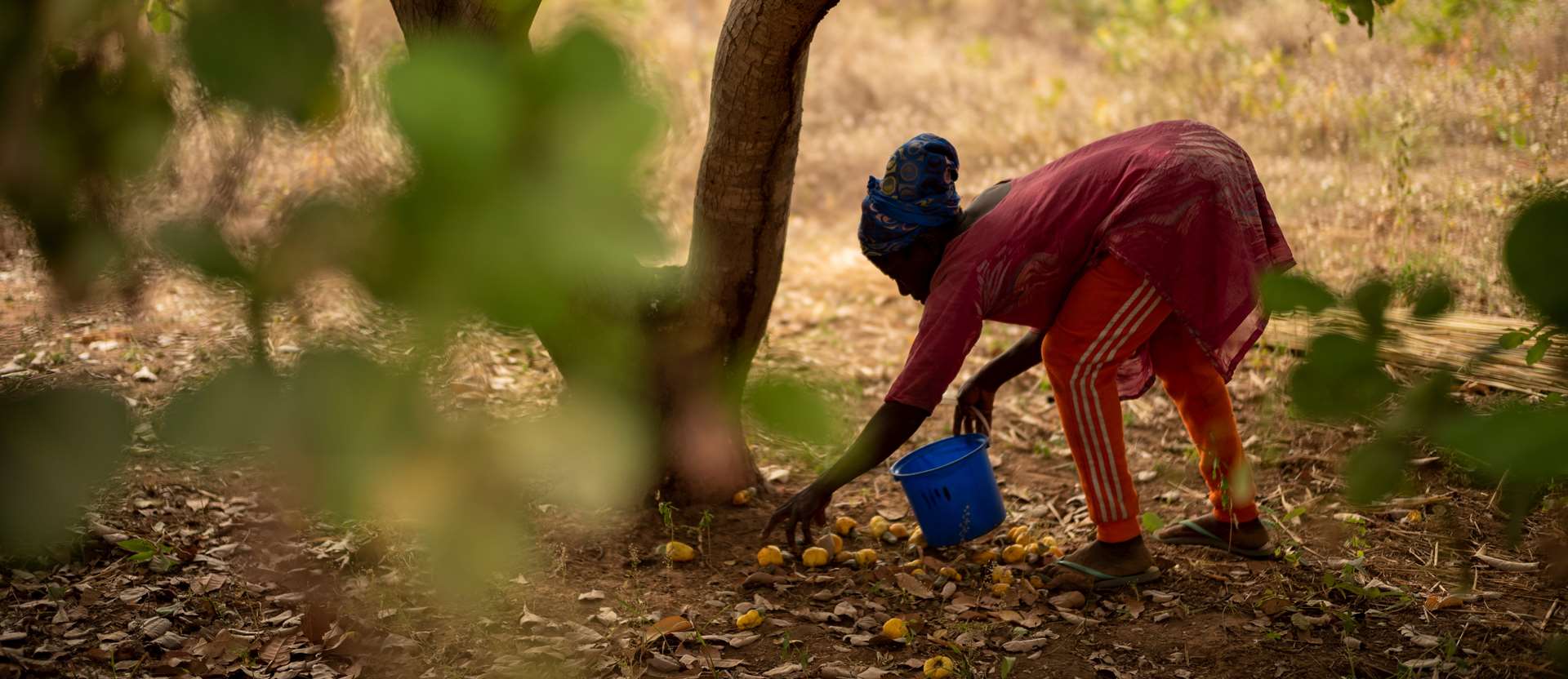
Climate Smart Agriculture in a nutshell
The way we eat, farm and grow our food is shifting. A changing climate is transforming weather patterns, soil quality and temperatures around the globe. For people who rely on the land, this means business as usual is no longer an option.
Different farming methods can either harm or heal in these moments of crisis. Destructive practices lock farmers into worsening cycles of deforestation and desertification, whilst regenerative practices can restore the land’s fertility, and the environment.
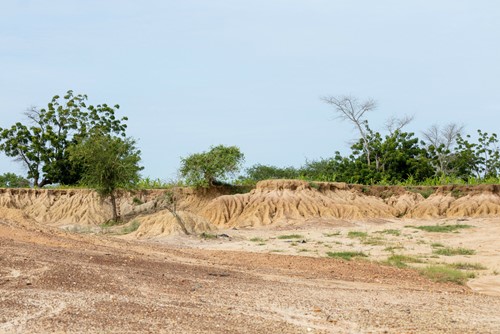
Image: Desertification is a worsening crisis across the regions where Tree Aid works. Adapting climate-smart farming practices can halt deforestation and restore land
Smallholder farmers’ reliance on agriculture for livelihoods and nutrition puts them on the frontlines of the climate-crisis; as such, they are highly attuned to the changes in their local environment. Some of these changes are far from subtle, though, and are adding to the pressures on food security for millions.
Offering farmers the right tools and training to grow their expertise in ‘climate-smart’ farming is pivotal to tackling poverty and the effects of the climate crisis in the drylands of Africa.
What is climate smart agriculture?
Climate-smart agriculture (or CSA), can be defined as “transforming agricultural development under the new realities of climate change”.
CGIAR, a global partnership researching for a food-secure future, identify three key pillars of CSA:
- Productivity – increasing incomes and yields
- Adaptation – reducing exposure [and increasing resilience] to climate-related risks
- Mitigation – reducing and removing emissions
In short, these pillars are about ensuring farmers remain productive and resilient in the face of climate change, whilst not contributing to the crisis in the process.
Done right, climate-smart agriculture can benefit much more than the land’s productivity, helping to strengthen communities, grow incomes, and take steps to creating a more just and equitable society – meeting many of the UN Sustainable Development Goals.
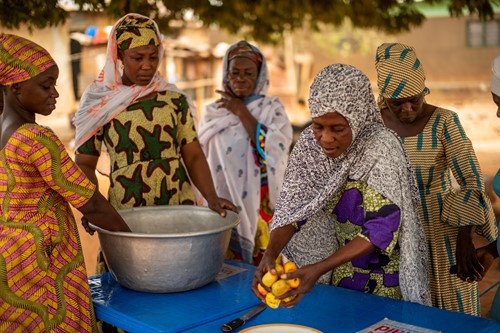
Image: Bringing communities together to share knowledge and support is central to our work
One key part of CSA is about making sure it is context-specific – a one size fits all approach won’t meet the needs of all farmers, everywhere. This means that the crops and trees grown, the way the land is managed, and how people work together all change depending on the location.
Likewise, CSA must be inclusive to be truly regenerative – particularly for the poorest and most vulnerable, like women and marginalised groups who are especially susceptible to climate shocks.
Why is CSA important to Tree Aid?
“Before Tree Aid I was growing other crops like maize and cassava so my lifestyle was like that of a peasant farmer. My lifestyle was very poor because of the lack of knowledge in certain agricultural practices” - Iddrisu Sumani
For the rural farmers we work with like Iddrisu, the need for “future-proofing" is clear - erratic rainfall, scorching heat and extended droughts are making harvests of staple crops increasingly unpredictable.
When you grow trees in a climate-smart system, all parts of the tree become useful. The fallen leaves are used in mulching and composting, the fruits and nuts are eaten or sold to earn an income, and the tree itself has a transformative effect on the land, trees and crops around it.
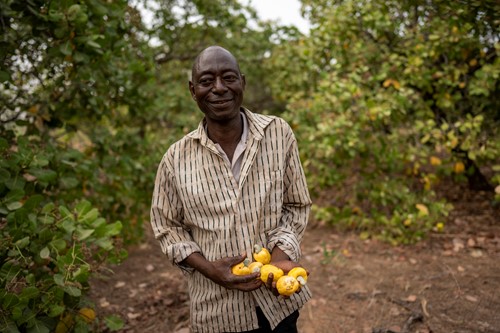
Image: Mr. Iddrisu Sumani (52), popularly known as Azanbuja, is a cashew farmer in Ghana's West Gonja Municipality.
Our projects must make sure that farmers from every demographic have the tools and training they need to benefit from trees sustainably, from seed to sale. CSA is a particularly useful for those already living in poverty, due to its inclusive approach and emphasis on long-term, affordable and ‘nature-based solutions’.
Resilience in a Nutshell – A Cashew Case Study
One example of a CSA project we’re running is taking place in Ghana’s West Gonja region. Here, farmers are growing cashew trees alongside legumes and vegetables to diversify their income streams. Using CSA, we can boost farm productivity without depleting the fertility of the land.

Cashews for the Climate:
As a drought-resistant tree, cashews are well-suited for Africa’s drylands. They grow well in poor soils, surviving during flooding and drought when crops like cassava and maize fail.
Cashew nuts are a high-value product too, offering better income than many staples, and every part of the fruit and nut can be used – learn more about the amazing (and little known) cashew apple!
When taken care of, cashew trees can live up to 100 years; that’s why our project includes training on land management techniques to ensure these trees thrive long into the future, despite the changing climate.

Climate Smart Solutions – Composting & Intercropping, in a nutshell:
Composting is the process of turning plant matter (like leaves) into natural fertilizer to enrich the soil, improving farmers’ yields. The use of artificial fertilisers (which derive from fossil fuels), which tackle the symptoms, rather than the cause of land infertility, can trap farmers in a cycle of rising costs and dependency. Composting however, is a free, zero-waste means of keeping farmland fertile.
Intercropping is the practice of growing at least multiple different crops together. Planting legumes alongside cashew trees helps 'fix' nitrogen which improves soil quality and ensures better yields. These groundnuts and vegetables are harvested by members of the community, who benefit from the additional income without the need for extra land.
Growing trees alongside crops is a type of ‘agroforestry’ farming system. Bringing the forest to the farm in this way can have numerous benefits for people and planet.
Image: Intercropping legumes like groundnuts (peanuts) helps fix nitrogen in the soil - a great alternative to using chemical fertilisers
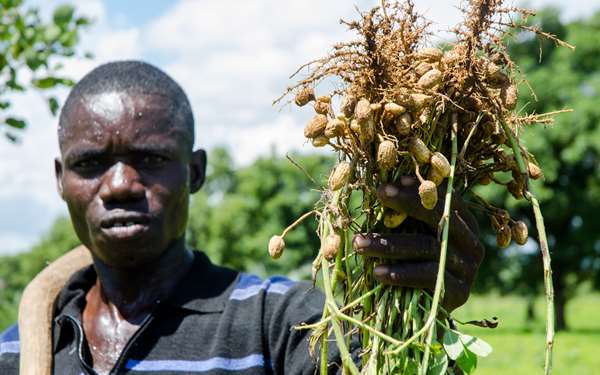

Future-proofing communities
“There’s so much we have learnt in this period - how to make compost, how to fence a garden, how to graft, how to fill poly pods, how to plant trees and many other skills” – Musah Laar
Our work at Tree Aid isn’t simply about planting trees – from seed, to sale, our projects are designed with and by communities to meet their needs. Climate-smart agriculture techniques are ideal for our work due to their long-term community focus.
Image: Portrait of Musah Laar, Chairman of Sori Number One Nursery - Damongo, Ghana (2022). Taken by Nan Kofi Acquah